The secret to Bucatini is on the inside! Bucatini pasta is similar to spaghetti, with a hollow center that allows sauce and flavor to seep in! Pair it with your favorite pasta sauce, one my recommendations or our family favorite, bucatini all’amatriciana. You won’t believe how quick and easy it is to make with just 3 staple ingredients!
Bucatini is one of the best noodles for a variety of sauces because it soaks up the sauce, inside and out! Sink your teeth into this tubular noodle and experience an explosion of texture and flavor!
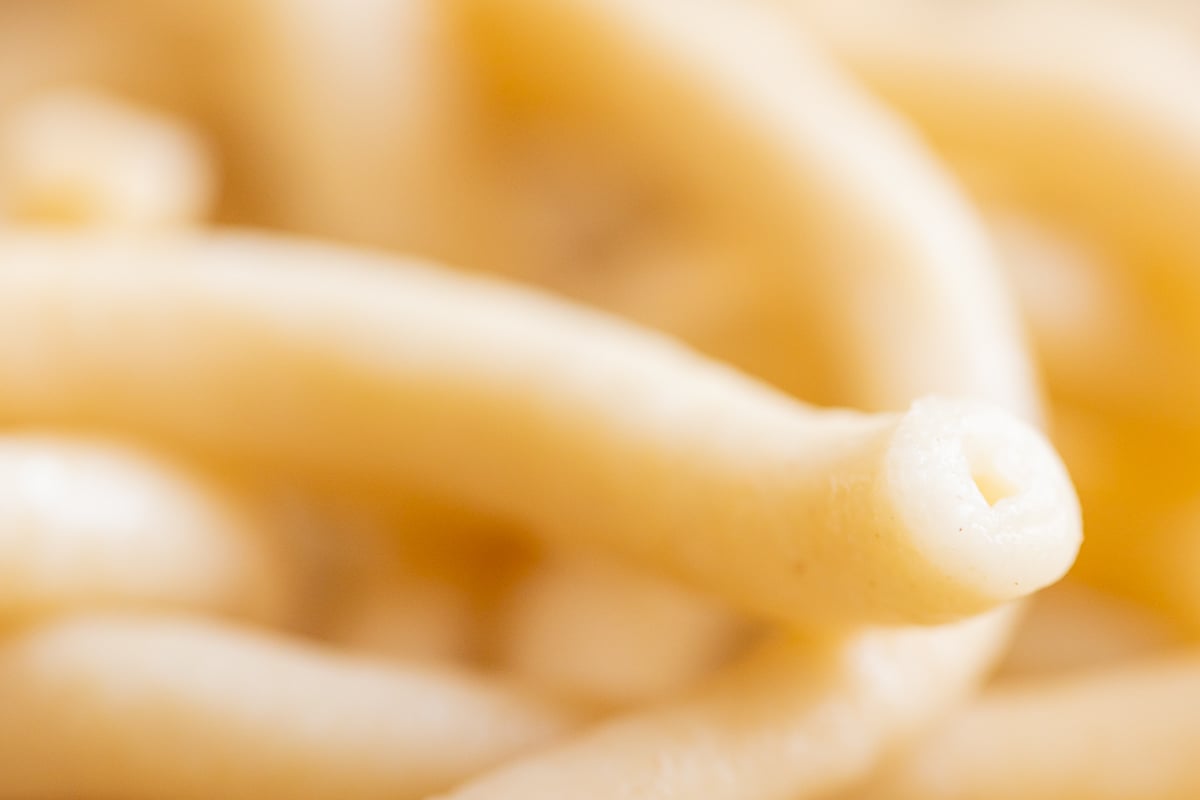
Bucatini is a traditional Italian pasta that originated in Rome, where it is still served with a variety of sauces today! The name ‘bucatini’ steams from the Italian word ‘buco’, which means “hole”.
It’s incredibly easy to make – our girls whip it up almost every week! Once you try it, you’ll never buy a box again. Don’t just take it from me, take it from readers who rated it a 5 star recipe.
★★★★★
“Yummy! This was my first time making pasta. Can you believe I’ve owned my KitchenAid pasta maker but never used it before? Thanks to this intro on making it myself! LOVE it. And excited to try your many more homemade pasta recipes. So easy. Who would have guessed?!”
– Lisalia –
Ingredients
- All Purpose Flour – I tend to use all purpose flour because that’s what we always have on hand. However, you’re welcome to experiment with whole wheat, durum wheat flour or equal parts semolina flour and all purpose flour.
- Eggs – These are a requirement for binding the flour into your dough.
- Water – The right amount of water must be added slowly to prevent it from being too dry or too sticky.
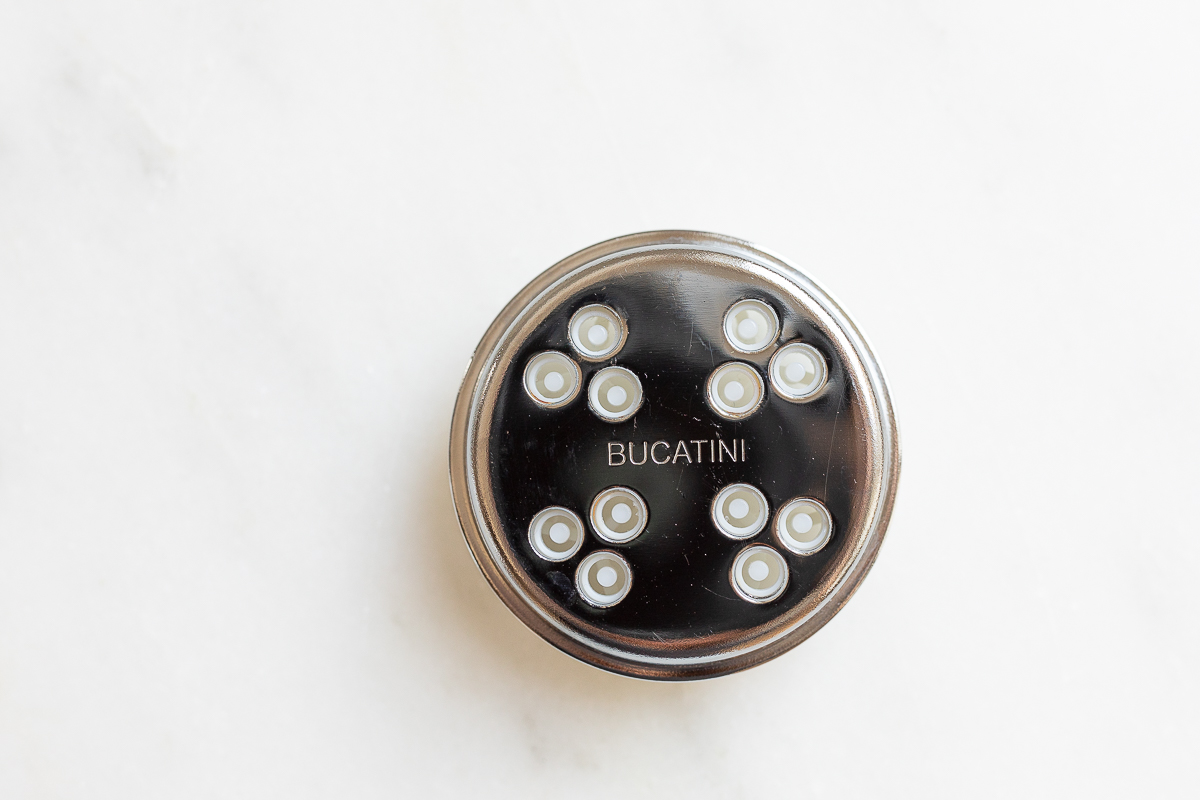
Tools to Use
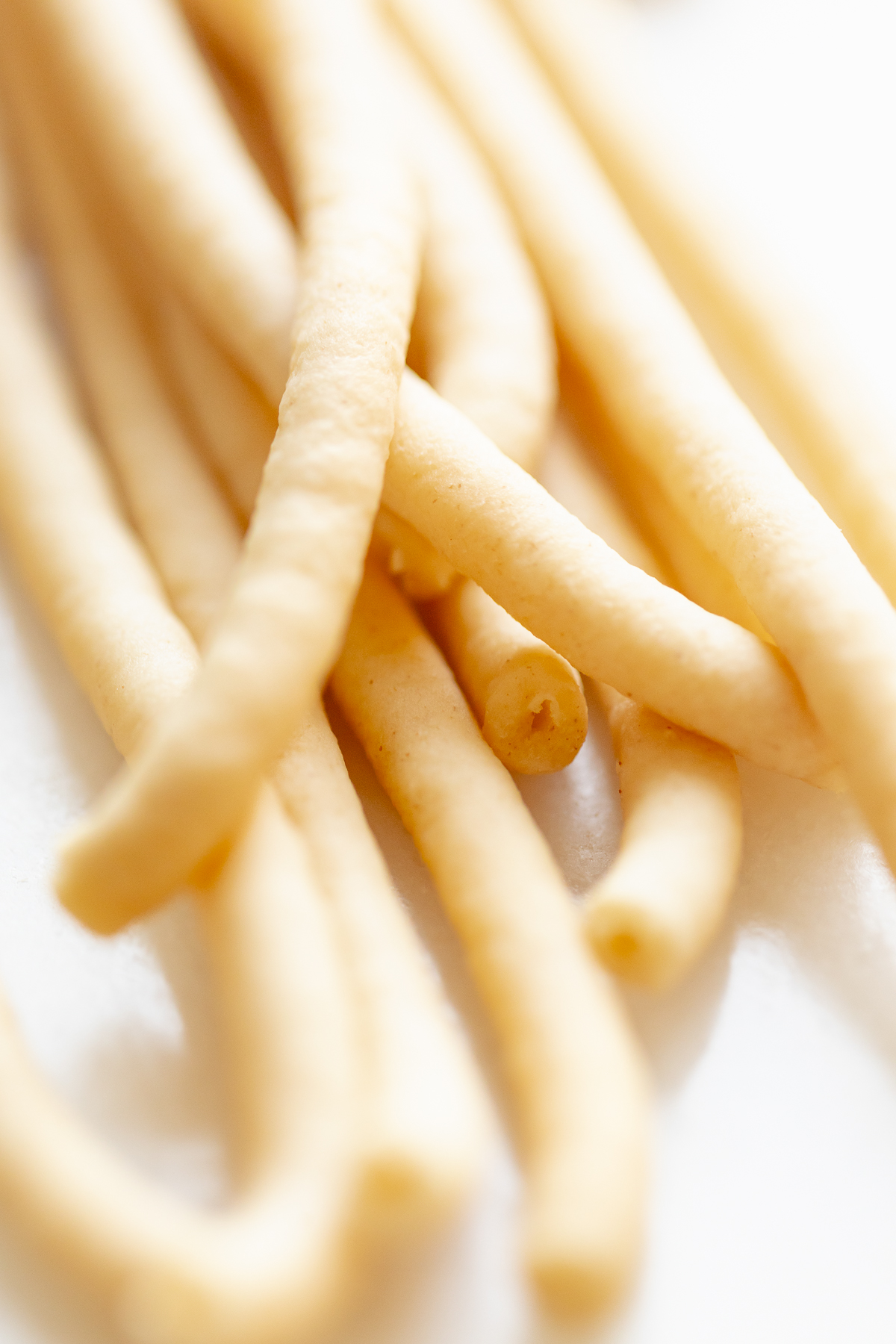

Test Kitchen Tips
- If the dough is too sticky, add a little flour to your hands and recreate the dough ball.
- If it appears to be too dry and not smooth enough, add a touch of water to your hands and recreate dough ball.
Serving Suggestions
You can try any of your favorite pasta sauces with your homemade bucatini – in fact, anything that you would serve with a spaghetti noodle works well with homemade bucatini.
How to Dry Fresh Pasta
Hang pasta over a drying rack preferred method or lay on a floured surface with space between each noodle and air dry a minimum of 30 minutes.
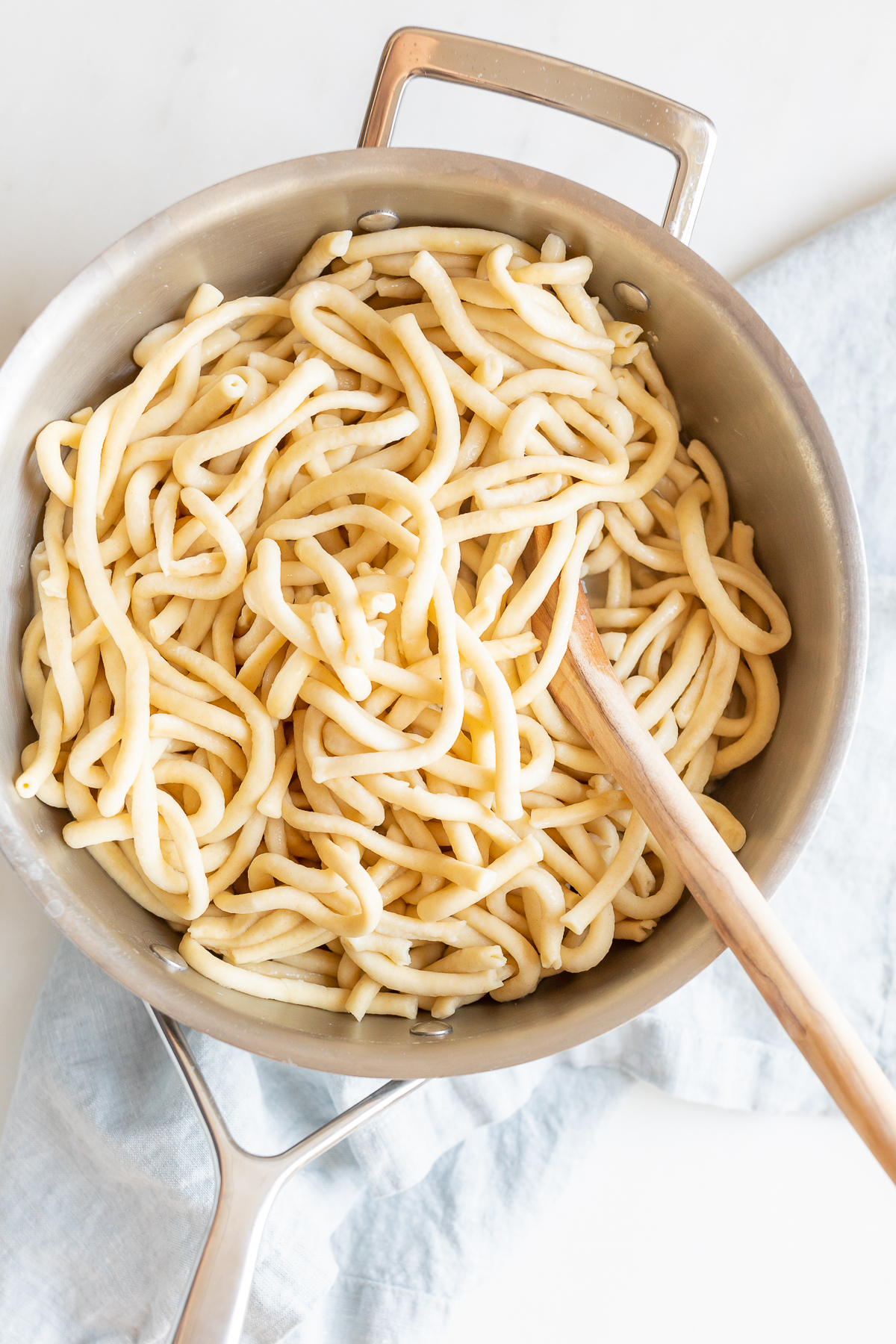
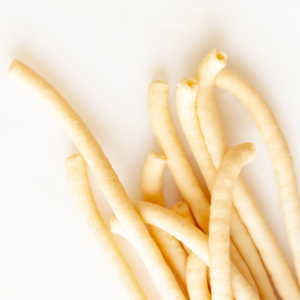
Bucatini
Ingredients
- 3½ cups all-purpose flour
- 4 large eggs
- 2 tablespoons water or as needed
Instructions
- In a large mixing bowl or stand mixer fitted with the paddle attachment, add flour and create a well. Add eggs and 2 tablespoons water to the center and combine over low speed until well incorporated. Using your hands, form a dough ball. If the dough is crumbly, add water 1 teaspoon at a time working it in with your hands. If it is sticky, add a small amount of flour to your hands and working into dough ball.3½ cups all-purpose flour, 4 large eggs, 2 tablespoons water
- Fit stand mixer with dough hook and press into dough ball in mixing bowl. On low speed (4), knead 2 minutes.
- Fit mixer with pasta maker attachment and bucatini plate. Make 1" dough balls, and insert into the top (feeder). When noodles reach the desired length, hold one hand under the noodle using the other to cut and transfer to boiling pot or drying rack. Repeat.
Prepare Pasta
- Fill a large pot with water and add 1 teaspoon salt. Bring to a boil.
- Transfer fresh pasta to boiling water. Stirring occasionally, boil 3 minutes or until al dente. Drain, reserving 1 cup pasta water (set aside) and toss with pasta sauce, adding pasta water to achieve desired consistency.
Julie’s Tips
Substitution Notes
Substitute all purpose flour with whole wheat, durum wheat flour or equal parts semolina flour and all purpose flour.How to Store
Place fresh noodles on a baking sheet for 2-3 minutes. Dust with flour and loosely fold into nests. Return to baking sheet to dry an additional 30 minutes. Place in an airtight container and refrigerate up to 24 hours or freeze up to 3 months. Add refrigerated or frozen noodles to a pot of boiling water and cook al dente.Estimated nutrition information is provided as a courtesy and is not guaranteed.
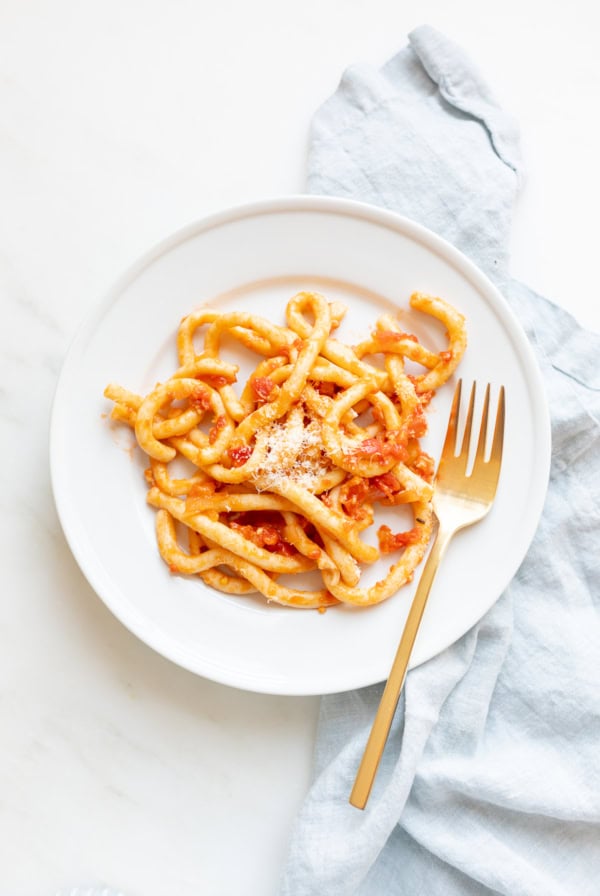
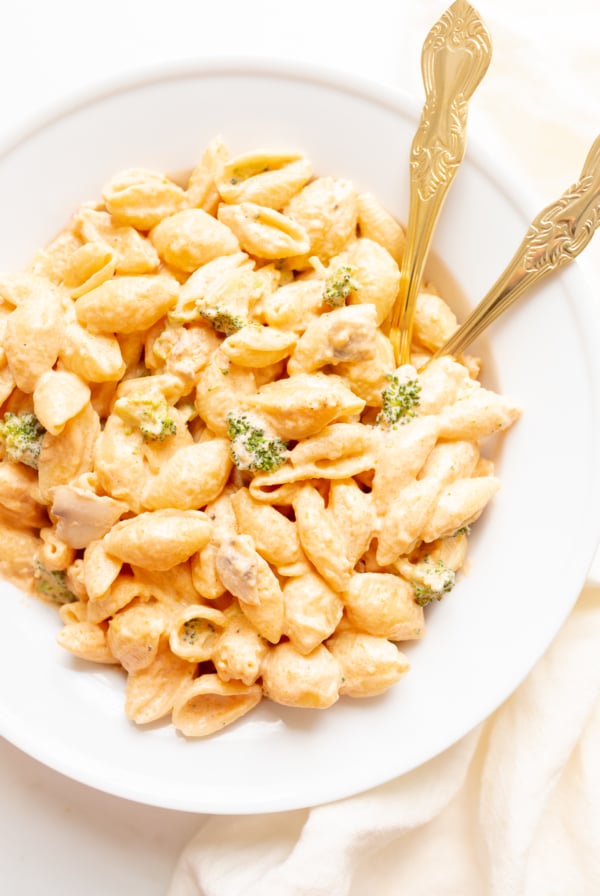
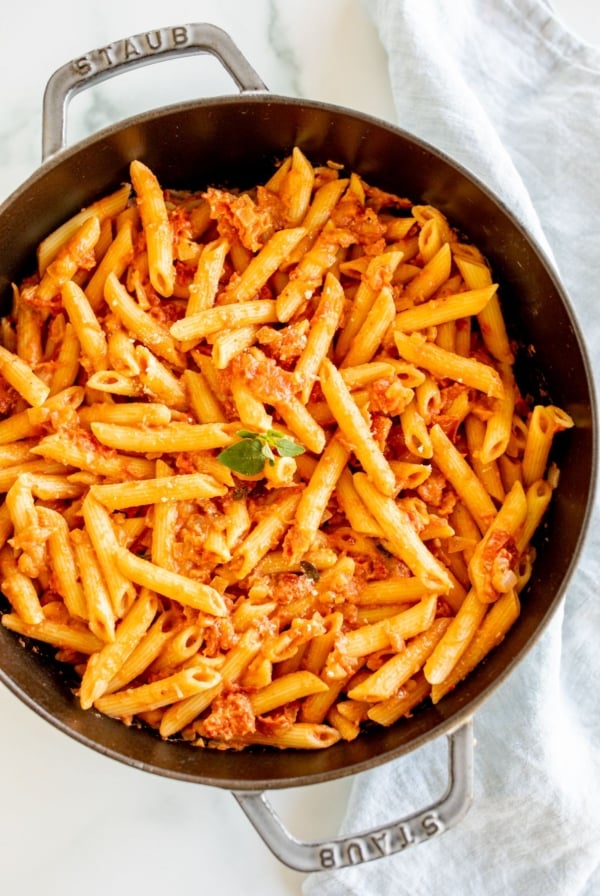
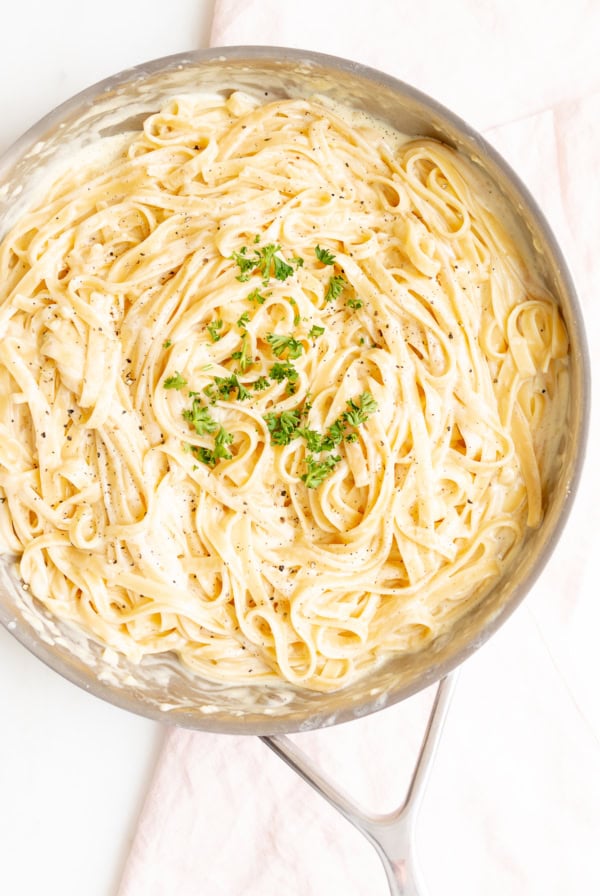
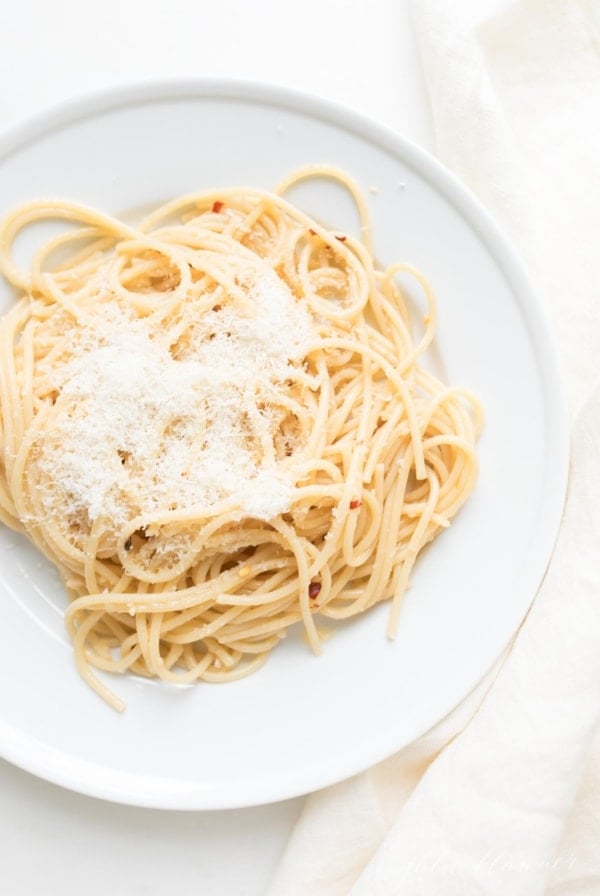
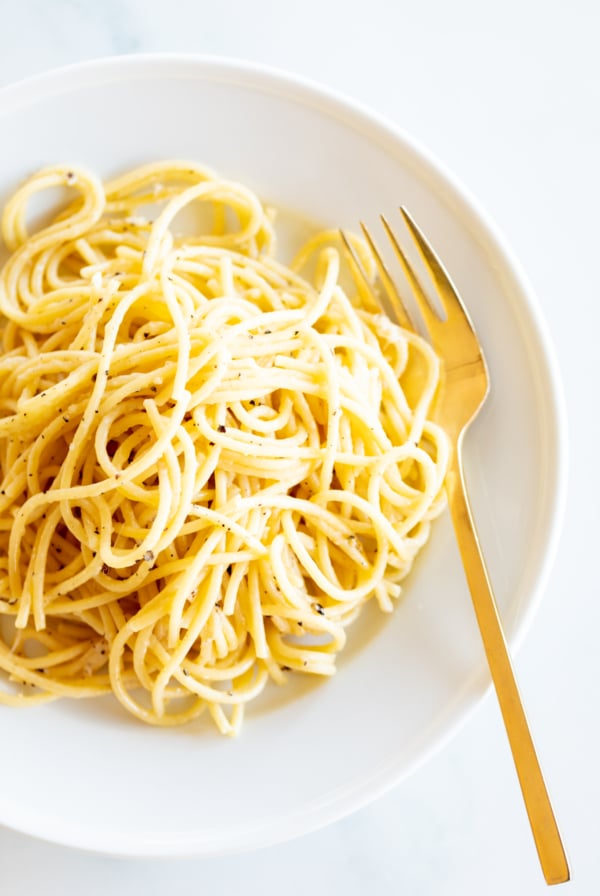
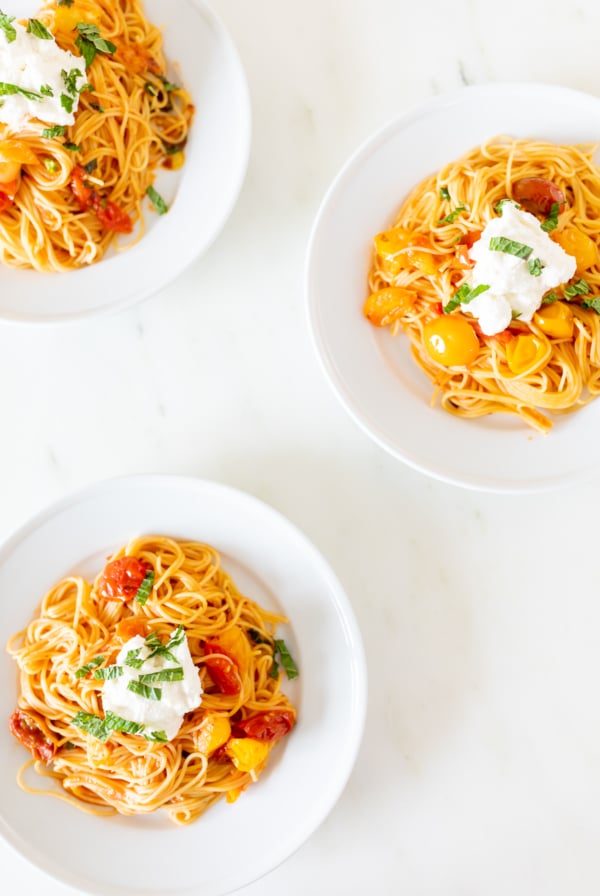
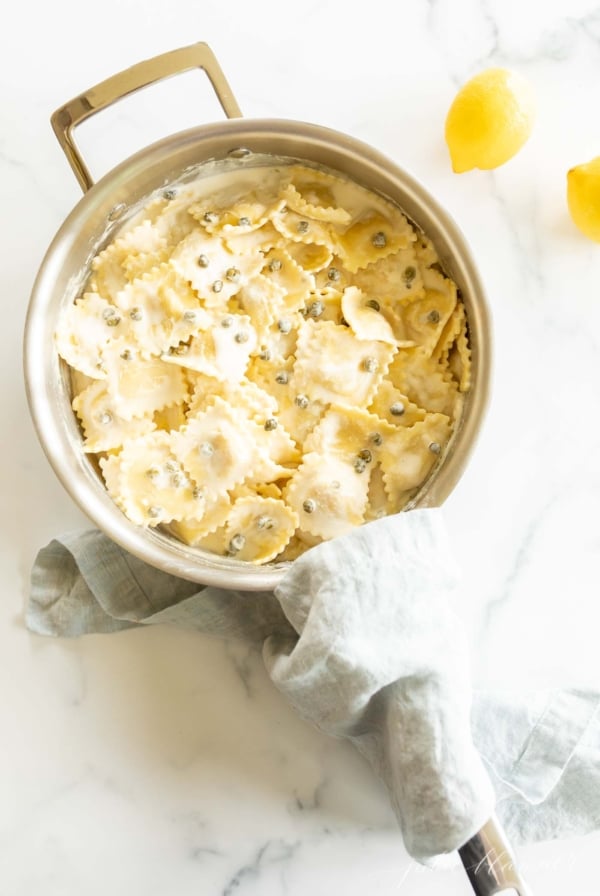
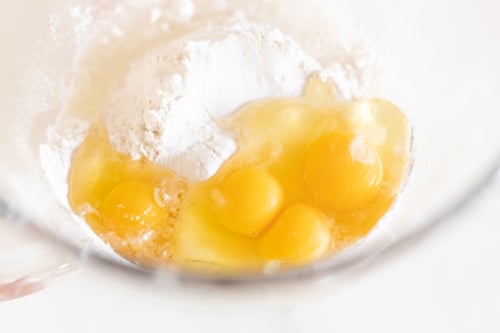
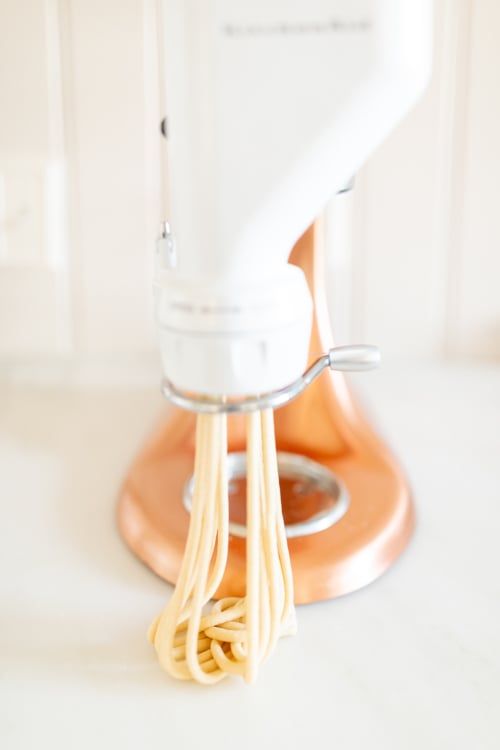
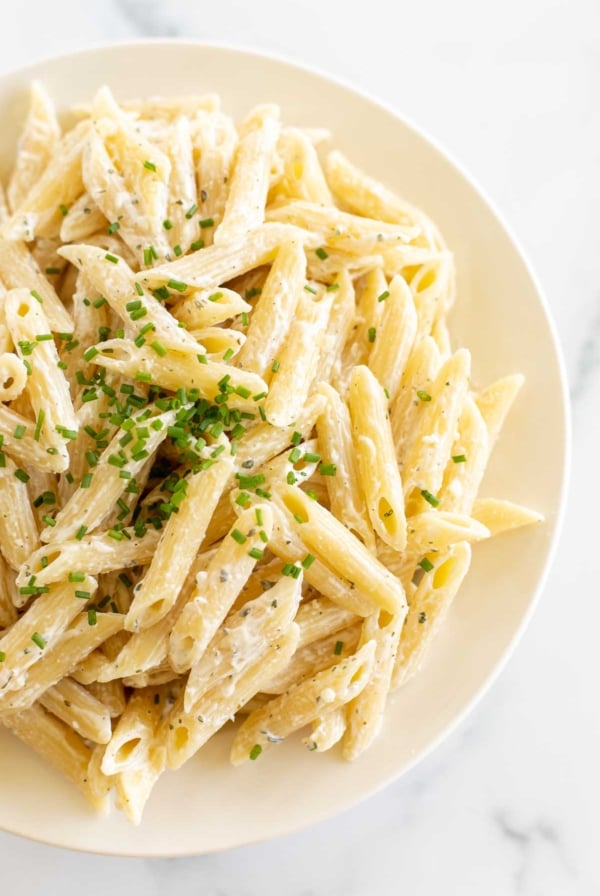
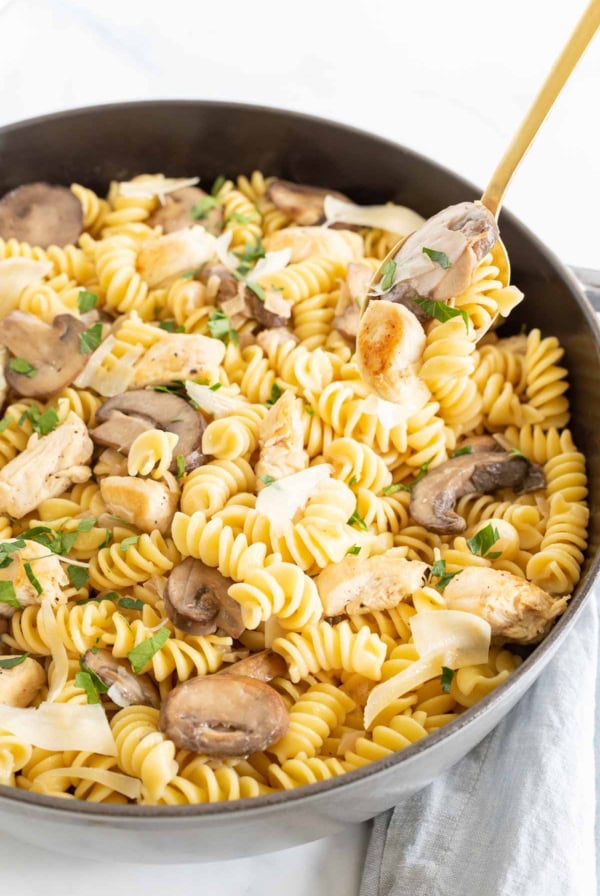
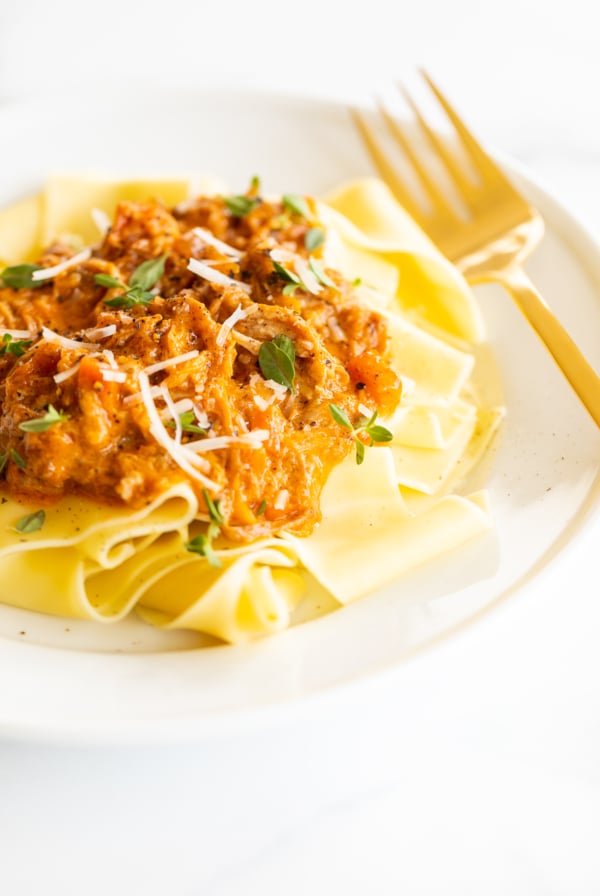






I just ordered that attachment for my KitchenAid so I can’t wait to make this! I’ve been wanting to try for forever but always felt too intimidated to actually get it right. Thank you so much for breaking the process down.
I’d never had this before but dang it is good! love it!
Yummy! This was my first time making pasta. Can you believe I’ve owned my Kitchenaid pasta maker but never used it before. Thanks to this intro on making it myself! LOVE it. And excited to try your many more homemade pasta recipes. So easy. Who would have guessed?!
So glad you enjoyed it! Sometimes simple is simply the best.
Luv ur receipts…use the ALL the time!!!
Thank you so much! Enjoy!!
Oh, I love learning how to make my own pasta! Thank you so much 🙂
Homemade pasta is so tasty! I use a similar recipe for the noodles in my chicken noodle soup, but I have to roll them by hand. I need to get a pasta attachment, it would be much easier!